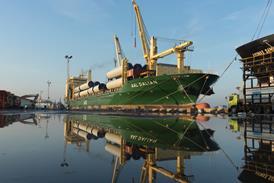July 3 - As box carriers battle with the pressure of falling rates, Drewry Maritime Research's Q2 2014 Container Forecaster highlights that there is a widening gap between the positive financials of the few carriers focused on cutting costs and the rest o
Drewry forecasts that, once again, average freight rates will be lower than in the previous year. It is estimated that on the headhaul transpacific trade alone, carriers have given away in the region of USD1.25 billion in annual revenue via the lower annual contracts they signed with beneficial cargo owner (BCO) clients in May.
Carriers also signed new annual contracts on the Asia-Europe trade earlier in the year at levels of around USD150 to USD200 per 40 ft container lower than in 2013. On the positive side, they may have secured base cargoes to fill their ships at a low price, but Drewry says this puts more pressure on carriers to try and recover revenue from the spot market.
While supply and demand remain key drivers of freight rates across all trades, says Drewry, those carriers cutting their costs are also better equipped to offer lower rates and in real terms, they are in fact passing back these benefits to their customers.
Industry unit costs per teu are forecast to decline by 2.5 percent this year and strategies, such as slow steaming, re-designing networks and buying bunkers in Russia, are crucial to this, but carriers will struggle to make a profit since Drewry is also forecasting unit revenues to decline by a similar amount.
Drewry believes that the blocking of the P3 alliance by the Chinese authorities is also disappointing for the industry since it was an excellent opportunity to help stabilise the main trades in terms of capacity management and efficient use of assets.
A mature debate is required to help balance the benefits of higher economies of scale, alliance consolidation and the need to control an oligopoly of mega alliances, says Drewry.
"This is an industry where the constant desire to launch bigger ships in order to reduce unit costs can only ever logistically be at odds with the aim of matching supply and demand," said Neil Dekker, Drewry's director of container research.
You can read the full report on Drewry's website.
















